Table of contents
Brazil nuts are the seeds of the Brazil nut tree ( Bertholletia excelsa). Because of the high selenium content, you should eat a maximum of two kernels per day. That is 2 x 2.5 g. Make sure you choose gently dried ( raw?) and not blanched organic Brazil nuts.
Using Brazil nuts in the kitchen:
The Brazil nut (also known as juvia nut or tucano nut) has a fine texture and a slightly sweet, nutty, earthy taste.
Chopped Brazil nuts are a great topping for muesli ( pea muesli) or other vegan recipes, such as pudding. Brazil nuts can also be used for cakes, cookies or other baked goods. However, since you should only eat a few Brazil nuts a day, you can mix them with other nuts in a recipe. Macadamia nuts and almonds have a similar taste and a comparable consistency. Together withpumpkin seeds, linseed (and various other seeds and kernels), Brazil nuts can be put together to create your own mixture depending on your taste and use.
Brazil nuts also go well with salty dishes. They are a delight as a topping on salads and soups. Pureed in a blender with dried tomatoes, thyme, rosemary, basil and a clove of garlic as well as a little salt andpepper, the Brazil nuts make a delicious vegan raw food spread.
Brazil nut oil is produced by cold pressing the seeds (seeds and oil have a poor LA-ALA ratio, see below). The oil should not be heated too much. The production of the oil produces Brazil nut flour, which can also be found in stores. It can be used as an alternative to other nut flours for cakes and baked goods.
Vegan beetroot and orange gratin with Brazil nuts:
Ingredients (for 4 people): 8 small beetroots (raw), 4 oranges, 4 Brazil nuts (organic), salt, pepper, some thyme and/or rosemary.
Preparation: Wash the raw beetroot. Cook unpeeled in salted water for around 30 minutes until soft. Allow to cool, then peel and slice. Halve two oranges and squeeze out the juice. Peel the other two oranges and cut the flesh into bite-sized pieces. Mix the beetroot and orange pieces in a gratin dish and pour the orange juice over it. Season with salt and pepper, and if necessary with thyme and/or rosemary. Chop the Brazil nuts and sprinkle over the beetroot and orange gratin. Heat the gratin briefly for 12 minutes at around 200 °C.
Vegan recipes with Brazil nuts can be found under the note: " Recipes that have the most of this ingredient ".
| Not only vegans or vegetarians should read this: Vegans often eat unhealthily. Avoidable nutritional mistakes. |
Shopping - where to buy Brazil nuts?
Brazil nuts can be purchased from major retailers such as Coop, Migros, Aldi, Lidl, Rewe, Billa, Edeka, Hofer, sometimes also in organic quality (bio). Smaller supermarkets such as Denner, Volg, Spar occasionally have them. The kernels can also be purchased in organic shops, organic supermarkets (e.g. Alnatura or Denn's Biomarkt), Health food stores and online retailers. The Brazil nut harvest takes place from January to April, and the nuts are available in stores all year round. 1 Brazil nuts with their shells are rarely found in stores, as the risk of contamination with aflatoxin is higher. 16 There are sometimes offers online for Brazil nuts that are still in their shells.
Prefer Brazil nuts from Bolivia. These have a more consistent selenium content than those from Brazil (often with very high values, see: Dangers - Intolerances - Side effects).
The term "raw" for Brazil nuts that are advertised as raw food often refers only to the omission of a roasting process. After harvesting, the Brazil nuts are dried; the producers do not always take the temperature restrictions (e.g. 42 °C for "real" raw food) seriously. In addition, according to the sources cited 10,11, it is common practice in the industry to heat the unshelled kernels (to 150 °C 10) so that the Brazil nut shell can be removed more easily. The term "raw food" is not protected by law - unlike organic.
The term blanched nuts generally refers to light-colored specimens without a seed coat (by briefly boiling in water, by so-called "dry blanching" using hot air or by other methods 14). Blanched Brazil nuts without a seed coat are less common in the trade than, for example, blanched peanuts, 14 almonds or hazelnuts. However, the term is not clear: "blanching" can also refer to processes to facilitate the shelling process (cracking) and can be used on unshelled juvia nuts (in this case it is often a treatment with steam 11,15). For further details see: Cultivation - Harvest.
Found in the wild:
The Brazil nut tree occurs almost exclusively in the wild, 5 there are only a few commercial plantations 16 (for geographical information see: Occurrence - Origin).
Storage:
Juvia nuts are best stored in an airtight jar in a cool, dark place.
Brazil nuts: Ingredients - Nutritional values - Calories
The energy content of Brazil nuts is very high at 659 kcal/100g. The calories come mainly from fat (67 g/100g, around 96% of the daily requirement) and protein (14 g/100g, around 28.6% of the daily requirement). Other nutrients: The carbohydrate content of 12 g/100g is moderate, with 2.3 g being sugar. The fiber (7.5 g/100g) would cover 30% of the daily requirement. 2
The Brazil nut is known for its very high selenium content. 100 g of Brazil nuts contain 1917 µg, which is 3485% of the daily requirement. 1-2 Brazil nuts are enough to cover the daily selenium requirement. A regular selenium intake is especially important for areas with a low selenium content such as Europe and parts of Asia in order to avoid a deficiency in this important mineral. It also contains vitamins such as vitamin B1 and vitamin E. 2
Methionine, an essential amino acid, is present in abundance. 100 g of Brazil nuts provide 1.1 g of methionine (121% of the daily requirement). The recommended daily dose of 2 Brazil nuts contains 0.06 g of methionine, which covers around 6% of the daily requirement. Brazil nuts are among the foods with the highest levels of methionine. Spirulina (1.1 g/100g), brewer's yeast (0.97 g/100g) and unpeeled hemp seeds (0.93 g/100g) have a similarly high content. 2
Brazil nuts are characterized by a poor LA-ALA ratio: They contain practically no omega-3 fatty acids (e.g. alpha-linolenic acid = ALA), but a lot of omega-6 fatty acids (e.g. linoleic acid = LA). 100 g contain around 24 g LA (which would make up 239% of the daily requirement) and 0.02 g ALA. This corresponds to a ratio of more than 1000:1. According to the Federal Office of Public Health ( FOPH), the value should not exceed 5:1 (LA:ALA) on average.
You can find all the Brazil nut ingredients, the coverage of the daily requirement and comparison values with other ingredients in our nutrient tables. In the article Nutrients explained you will get a detailed insight into the topic.
Dangers - intolerances - side effects:
Are Brazil nuts poisonous? The selenium content varies greatly. At the moment we can only recommend Brazil nuts from Bolivia, because the differences in the content are not as enormous as in Brazil. With Brazil nuts from Brazil, one nut a day could provide up to 288% of the daily requirement. 9 The Brazil nut is not poisonous, but consuming large amounts can slowly but surely poison you.
Are Brazil nuts radioactive? Brazil nuts naturally contain radioactive radium (Ra). The levels are below the established maximum levels, so there is no health risk when consumed. Radium is naturally present in the soil; the Brazil nut tree absorbs it and stores it in the seeds. Studies show that the place where the Brazil nut tree grows has no influence on the concentration of radium (radioactivity) in the Brazil nut, but that the level is relatively stable. The seeds also contain increased concentrations of the potentially toxic element barium (Ba). Studies show that humans only absorb a small amount of this substance. 3
Due to the high content of selenium, radium and barium, one should avoid high consumption and not exceed the daily maximum amount of 1-2 Brazil nuts.
The Brazil nut is not known to be a typical allergen. However, as consumption increases, cases of allergies caused by Brazil nuts are also increasing. 8 This allergy can be associated with a walnut allergy as well as with reactions to genetically modified soybeans. 11
Harvesting conditions and storage humidity promote contamination with aflatoxin. 3,11 Strict controls have now kept the problem under control and show good figures for shelled Brazil nuts. 3,16 Aflatoxins are not detectable by the consumer. Nuts that smell rancid or have dark spots should not be used to be on the safe side. 17
Health aspects - effects:
Are Brazil nuts healthy? Juvia nuts are considered an important food source of selenium. The kernels are a good alternative to selenium supplementation, especially in areas with selenium-poor soils (including Europe and parts of Asia). Selenium is an essential micronutrient with an antioxidant effect. It plays an important role in detoxifying the organism and strengthens the immune system. Iodine and selenium are crucial for the health of the thyroid metabolism: they activate and inactivate the thyroid hormones. 5 Meta-analyses also show that people who consume enough selenium are less likely to develop cancer. 7
The methionine contained in Brazil nuts is one of the eight essential amino acids. Amino acids are the building blocks of proteins. Essential means that our body cannot produce the substance itself, but needs it in certain quantities. We now know that the body only needs lysine and threonine irreversibly transaminated and only these are really essential. Nevertheless, a sufficient supply of methionine is important for the body. Juvia nuts contain almost twice as much methionine (around 1100 mg) per 100 g as meat (beef, raw: 554 mg) and fish - and about three times as much as eggs (380 mg) or twelve times as much as cow's milk (82 mg). 2
To compensate for the unfavorable LA-ALA ratio of Brazil nuts, Erb muesli or linseed are good options. The latter have an extremely healthy ratio of 1:4, meaning less potentially inflammatory LA (omega-6) and more anti-inflammatory omega-3 in the form of ALA. If you enter the "sorting by health values" option in the ingredients list, you can select ingredients that compensate for a deficiency. The same applies to recipes, e.g. by sorting by LA:ALA ratio. You can see the importance of this aspect in the link to olive oil, where we explain it in detail.
Occurrence - origin - ecology:
The seeds of the Brazil nut tree ( Bertholletia excelsa) are known as Brazil nuts. The tree is native to the Amazon region, mainly in Brazil, Bolivia and Peru. 5 The main producers from 2013-2020 are Brazil and Bolivia, each producing between 30,000 and 40,000 tons annually. In contrast, Peru only produced around 5,600-5,800 tons annually from 2013-2020. 4 Recently, countries in West Africa have started producing Brazil nuts (Ivory Coast, Gambia, Ghana and Morocco). However, they still make up a small percentage of world trade. 4,5,16 In addition, plantation-based cultivation experiments are underway in Southeast Asia. 16
Growing in the garden:
Brazil nut trees need a subtropical climate. Elsewhere they would have to grow in a greenhouse. The plant needs about 10 years, 12 until it bears its first fruit (the time span of '30 years' is also mentioned 6,16). By then the tree would already be too tall to be kept in a greenhouse. 6 Harvesting your own seeds is therefore difficult.
Cultivation - Harvest:
The Brazil nut seeds form in a capsule fruit that is surrounded by a hard and woody shell (outer capsule). Depending on the information, around 8-24 5 or 15-30 12 seeds form per fruit (each surrounded by a woody seed shell 16). The fruits fall from the trees during the harvest season from January to April. Pickers collect the fruits that have fallen from the wild trees. These are often locals, which is why the trade in Brazil nuts is a good source of income for the indigenous population in the Amazon region. 5
After harvesting, the collectors chop open the hard capsule with a machete and fill the kernels into sacks, which they then sell to middlemen or processing factories. Women often sort the kernels before machines crack and heat them. 18 Drying takes place either on slatted floors or in rotary dryers or ovens. 11,13
Brazil nuts are difficult to remove from the seed shell, so they are usually either pickled (approx. 24 hours) or treated with heat before peeling. The heat treatment is often done in an autoclave process with hot steam, which expands the shell and loosens the inner skin. 11 The kernels treated in this way are easier to crack or remove from the shell, but mostly only lose part of the seed shell. 10,11,15 This is why some processors or traders speak non-specifically of "blanched" Brazil nuts. 15
Ecological aspects:
The commercial Brazil nut harvest has attracted criticism for two main reasons: human rights organizations denounce the dangerous collection in the rainforest, especially by minors (child labor); 18 environmentalists warn that the profit-oriented collection weakens the Brazil nut tree population and prevents the necessary regrowth of young trees from leftover seeds.
General information about Brazil nuts:
The Brazil nut tree ( Bertholletia excelsa) belongs to the potted fruit tree family (Lecythidaceae). Brazil nut trees are up to 60 m high and can reach a diameter of 100-180 cm. They are usually found in groves of 50-100 individuals and need at least 10 years 12,16 until the first flowering.
Alternative names:
The Brazil nut is also called: Brazil nut, Amazon almond, Brazilian chestnut, Marahon chestnut, Juvia nut (Yuvian nut), cream nut, stone nut and Tuca nut. The German names Brazil nut and Brazilian chestnut are both partly derived from the Brazilian term Castanha-do-pará ("chestnut from the northern state of Pará").
The so-called Brazil nut effect (or muesli effect) is the fact that in a package of muesli or a nut mix, the largest components are almost exclusively at the top. The phenomenon is caused by shaking movements during transport.
In English they are called Brazil nuts or Amazonian nuts.
Literature - Sources:
Bibliography - 18 Sources (Link to the evidence)
| 1. | Rockwell CA, Guariguata MR, Menton M, et al. Nut Production in Bertholletia excelsa across a Logged Forest Mosaic: Implications for Multiple Forest Use. PLoS One. 2015;10(8): e0135464. |
| 2. | USDA United States Department of Agriculture. |
| 3. | Mazokopakis EE, Liontiris MI. Commentary: Health Concerns of Brazil Nut Consumption. J Altern Complement Med. January 2018;24(1): 3-6. |
| 4. | FAOSTAT Food and Agriculture Organization of the United Nations. Brazil Nuts, with shell. 2013-2020. |
| 5. | Cardoso BR, Duarte GBS, Reis BZ, Cozzolino SF. Brazil nuts: Nutritional composition, health benefits and safety aspects. Food Res Int. October 2017;100(2): 9-18. |
| 6. | Gartenjournal.net Einen Paranussbaum pflanzen - funktioniert das? |
| 7. | Lee EH, Myung SK, Jeon YJ, Kim Y. Effects of Selenium Supplements on Cancer Prevention: Meta-analysis of Randomized Controlled Trials. Nutrition and Cancer. 63(8): 1185-95. |
| 8. | Pastorello EA et al. Sensitization to the major allergen of Brazil nut is correlated with the clinical expression of allergy. Journal of Allergy and Clinical Immunology. December 1998;102(6): 1021-1027. |
| 9. | Silva Junior EC et al. Natural variation of selenium in Brazil nuts and soils from the Amazon region. Chemosphere. December 2017;188: 650-658. |
| 10. | Masthoff LJ, Hoff R, Verhoeckx KCM et al. A systematic review of the effect of thermal processing on the allergenicity of tree nuts. Allergy 2013;68(8): 983–993. |
| 11. | Hokmabadi H, Sedaghati E. Safety of Food and Beverages: Nuts. Encyclopedia of Food Safety. 2014: 340–348. |
| 12. | Brücher H. Tropische Nutzpflanzen: Ursprung, Evolution und Domestikation. Berlin: Springer-Verlag. 1977: 409f. |
| 13. | Nuturally.com Paranusskerne: Eigenschaften, Sorten, Nährwerte und wo sie zu finden sind. 01.07.2022. |
| 14. | Patents.google.com CA1108466A (Canada). Method of blanching nuts. |
| 15. | Patents.google.com US1448431A (United States). Blanched brazil-nut kernel. |
| 16. | Dörken VM, Steinecke H. Bertholletia excelsa – Paranuss, eine Art der Affentopfgewächse (Lecythidaceae). Jahrb. Bochumer Bot. Ver. 2011;2: 183-186. |
| 17. | Ugb.de Sind Aflatoxine in Nüssen noch ein Problem? |
| 18. | Taz.de Minderjährige Erntehelfer in Bolivien. Die Jungen ohne Kindheit. 14.8.2021. |

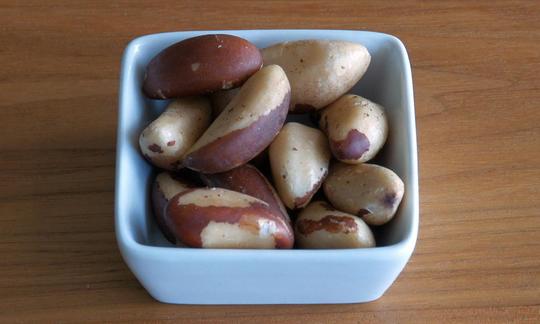

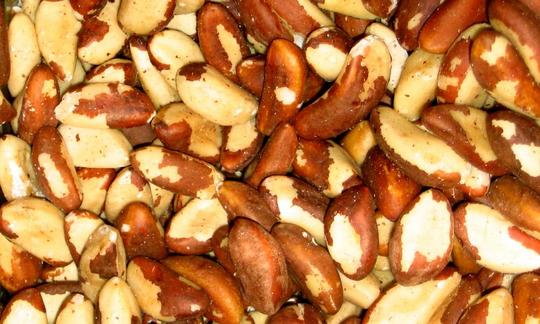

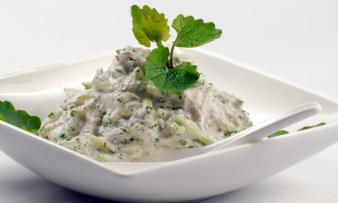
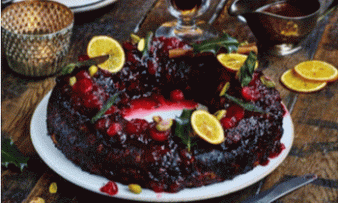
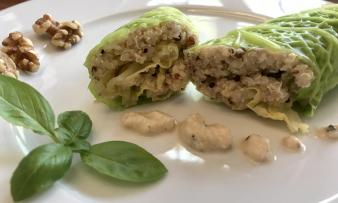





Comments